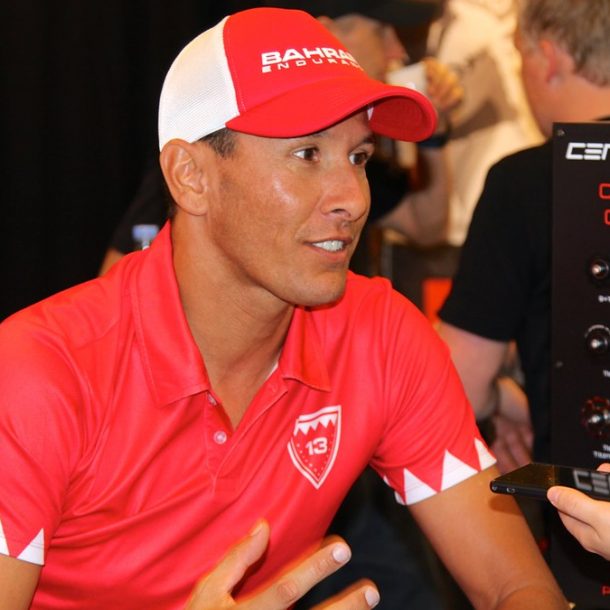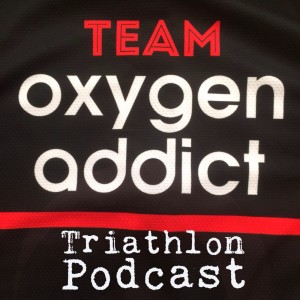
April was always representative of my birthday, Easter and Ironman Australia weekend. Those were the best days ever, when the endurance world was known for their craziness and their parties, when races were tough, but parties post these events were next-level.
Driven to Win on Debut
To be honest I had not really ever thought of my debut ironman happening as early in my career as it did, but I always knew that I would one day race at Ironman Australia.
I opted to do Ironman after some disputes with my National Federation about Olympic Games preparation for Athens; they had made monumental errors in selection procedures for the Sydney Games that had them fail in an event they should have won. They left both myself (world number 1) and Greg Bennett (world number 3) off the team for Sydney — and subsequently failed to even medal.
In the aftermath after a reshuffling, I found myself pushed to realign with a new relatively amateur and restrictive Australian high performance program, which I thought was a product of excuses and buck-passing as opposed to a value-added restructure built around the aim of success. I was still the number 1-ranked triathlete in the world and from my perspective I was being athletically successful and commercially relevant to partners under the training camp and structure I had built out of the USA. I opted out of the program offer, and they literally turned their back on me. I was basically left with only one place to go, and that was Ironman, since Ironman 70.3 racing didn’t exist back then.
It was the end of 2001, I had won three World cups that year, had crashed at World Championships when I had the race won, had won Goodwill Games, and had won every race I competed in for the past two seasons. I was at the height of my short-course racing career, but with no racing available to me in Australia or on the World Cup circuit up until May, I opted to enter the Ironman Australia event as it was the one I knew the most. I was familiar with the course having watched the event for many years, and felt comfortable preparing for an Ironman race at my home base in Australia over the early new year of 2002.
There were only 10 Ironman races in the world at that point, so every Ironman was stacked and winning one had substance; you could build a career from it. Ironman Australia was always the heaviest-stacked event, and I always was drawn to competing against the best guys. An Australian hadn’t won this event for 12 years, and I was driven to be successful on debut — but winning an Ironman on debut was almost impossible. Only Dave Scott and Luc Van Lierde had ever achieved that feat, and I wanted to match that.
(I did.)

The Perfect Setting for a Race
The town of Forster is three hours north of Sydney and is an amazing venue right on the beaches and lakes of Tuncurry. It is a holiday destination and simply beautiful place. The locals were right behind the event, and it was the first town that truly adopted the sport of triathlon years earlier. This event had grown up here, becoming massive; every single major star in the history of triathlon had competed here.
As a triathlete in Australia it was the place you went in April every single year. I think more than anything, the race signaled the final event of the season Down Under. So many athletes from all over the country came and used the weekend as a celebration of the sport, and the bars and pubs were open all day.
The layout was so spectator-friendly because of the way the town is built and the two cities of Tuncurry and Forster which shared part of the course. The famous bridge across the causeway created this natural downtown amphitheatre and the crowds were incredible. The masses of intoxicated but friendly crowds would spill out on the streets, and this vocal support was amazing. Everything about this race was epic. I still believe the finish straight of this race was the best in the world. All the hotels and high-rise apartment buildings ran along the finish straight for 800 metres and these would be packed with people and music and atmosphere.
The course also to be honest was challenging and this was in an era where people pursued events that presented a challenge, not obsessed with these times that are absolutely irrelevant and push race organisers to continue to develop easier events. Forster was just damn hard in every aspect of course design, and you proved yourself a hard athlete if you raced here.
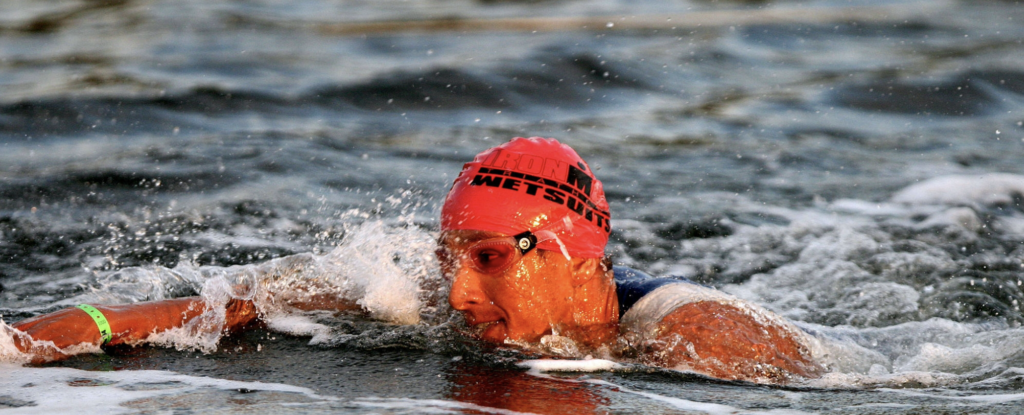
I think it was just the perfect setting for a race and that can be very rare. Most of the time, you have to create hotspots and natural spectator viewing areas, but this course just had it naturally occurring, so there was a real authenticity about the crowds and this fed the party that surrounded the race. There will never be another race like it. I raced many Ironmans in my career, but this was one of the best by far for all of these reasons.
That Record-Equalling Fourth Win
I think for me the top memory was winning the fourth title in a row. I always wanted to match the feats of Pauli Kiuru who I watched as a kid race this event and watched him be so successful in Hawaii. Every Australian of my generation knows who the flying Finn is. He was a legend here.
Obviously winning on debut here was massive and then defending against all comers for the next two years after that was amazing, but going into the race to equal Pauli’s record was huge in Australian triathlon, as everyone assumed this was not going to ever be able to be done again. The Australian press and to some degree I myself had built up the story of the record-equalling fourth win.
The Australian contingent was getting very strong, especially in the second bike group, and my concerns were always about these big bikers and some of the French stars closing on the back section of the bike course and nullifying my advantage. Young Australian Luke Bell who had finished fifth in Kona the year prior was someone who was riding a lot of momentum and was strong on this course. I was also in the position of everyone watching me to “make the race,” so basically breaking the race up and controlling it was going to be left to me, and some of these athlete stars including Bell, Pete Jacobs, Jason Shortis and Patrick Vernay had the luxury of sitting back and allowing the race to come to them.
I really worked myself up for the event and was aggressive from the onset; I dictated the swim and exited the water with a large group. I was immediately aggressive through transition and onto the bike. The winds were up in Forster that year with a predominant side wind, which made the bike ridiculously tough to ride. I opted to really attack the bike and throw caution to the wind, in the same way Pauli Kiuru would do it. I started to break the group up by about 60km, and only Bell could follow.
Going through town at halfway I felt Luke starting to struggle into the headwind, so I attacked him in the cross winds that were prevalent for about 30km of the section out of town. This ultimately split the field up and I opted to really drive the nail in on the bike.
It was a stinking hot day (it was the day before my birthday) and I jumped off the bike a little dehydrated and fatigued. The temperature hit 35 degrees out on the run course which was brutal, but I was able to keep it together for the marathon and run defensively to win my fourth title.
I was absolutely ecstatic to win this one. I really felt coming out of this race that my ability to control and race these ironmans was getting much more refined. I had won every Ironman I had ever done except Kona, so I felt that my experience was pushing me towards Kona success that year, and the heat was something I felt I was conquering as this had been an Achilles heel for me. It was my best takeaway experience from the race for many reasons and the 4th, record-equaling win made it one to remember.
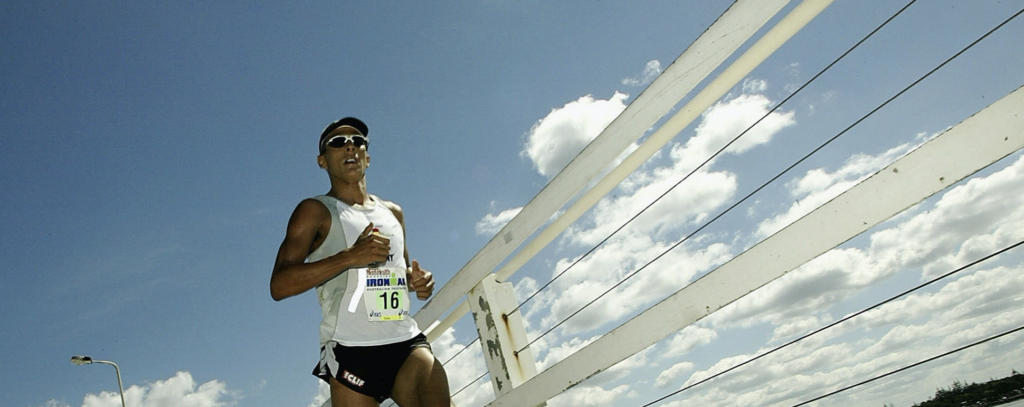
Moving on to win in Hawaii
My failings in Kona in October were huge frustrations and now legendary to some degree in the history of the champions of the race. In my head I would almost make up for them by winning Australia a few months later in April and proving to myself something. But by 2006 and 2007 I was a lot more comfortable with how I raced the distance and my position at the top of the Ironman tree and was free to do it my way, and was not defining myself by my early-season racing. I think fear and self-doubt can shape things for you when you indirectly allow them to, and much of my racing was as much about the race as it was building my own self-confidence that I was both capable and able to be competitive in this distance.
I am a racer at heart and anyone who followed my career knows how much I loved pinning on a number. Athletes now have a Ironman 70.3 series they can feed that racing drive with if they desire, and had that been around back then it would have satisfied many of the needs I had as an athlete. I think without question over the half-ironman distance between 2001 and 2006 I was by far the best in the world at that racing. It suited me more than the ironman. We just never had a platform to display that on outside of Wildflower, which I dominated and also the Strasbourg and Pucon Chile events.
Failing in Kona probably came from the fact I was doing three ironman builds in a season and mixing these shorter races in the mix to satisfy this need to compete. But as we got into 2007, we had some more of these 70.3 races and I was able to focus on those in the early season.
By dropping that Ironman in Oz, I started my preparation around much faster and refined racing. I was able to compete in a few half-ironman races and-non drafting Olympic distance events in South America and the USA, then move to Europe in May and prepare for Ironman Germany or Roth, which I would dominate. Coming into those much fresher than previous years I was able to do some amazing things against my current peers who were winning in Kona.
I literally came off that lack of Ironman Australia racing and won Ironman Hawaii.
When Triathletes Blew Up — During and After Races
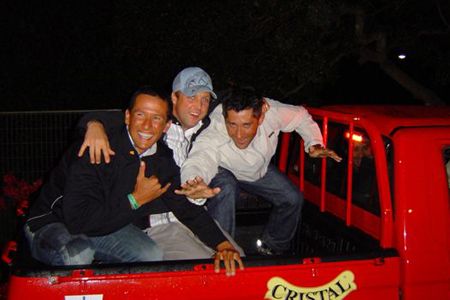
We raced off feel and perceived exertion and appreciated much more the cerebral racing within this sport and the courage it takes to take chances. There seem to be much more blow-up stories back then. Where most stories these days centre around nutrition complaints or watt errors, these just didn’t exist. The common story in the old days was: “I went out too bloody hard.”
The meltdown parties were a massive part of all racing back then. It was a built-in component, with awards parties always supported. It was just our mindset of competing, where working hard, playing hard and being hard were defined differently. I guess it was much more raw. People enjoyed that community and social aspect of the sport at afterparties; they were the place where everyone came together and discussed the race appreciating the good and bad stories.
These seem to be less significant nowadays and have been relegated to be more of the Ironman slot roll-down and a quick awards ceremony to highlight the winners. I think the sport has lost a piece of its soul and identity there.
Original article posted on mxendurance.com
Philosophy
“Great things happen to people who make great things happen.”
Navigate
chris@macca.com
Terms & Conditions
Privacy Policy
